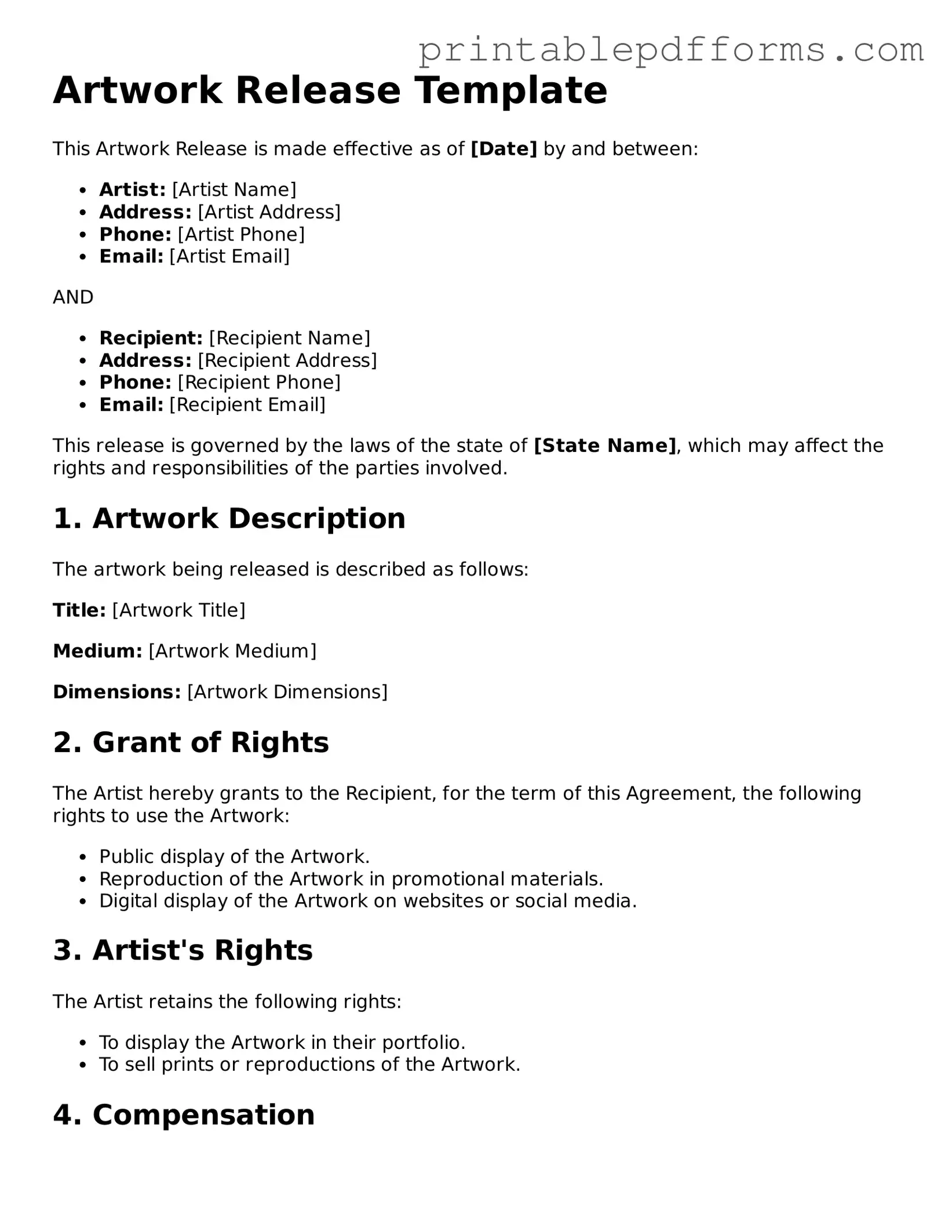Artwork Release Template
This Artwork Release is made effective as of [Date] by and between:
- Artist: [Artist Name]
- Address: [Artist Address]
- Phone: [Artist Phone]
- Email: [Artist Email]
AND
- Recipient: [Recipient Name]
- Address: [Recipient Address]
- Phone: [Recipient Phone]
- Email: [Recipient Email]
This release is governed by the laws of the state of [State Name], which may affect the rights and responsibilities of the parties involved.
1. Artwork Description
The artwork being released is described as follows:
Title: [Artwork Title]
Medium: [Artwork Medium]
Dimensions: [Artwork Dimensions]
2. Grant of Rights
The Artist hereby grants to the Recipient, for the term of this Agreement, the following rights to use the Artwork:
- Public display of the Artwork.
- Reproduction of the Artwork in promotional materials.
- Digital display of the Artwork on websites or social media.
3. Artist's Rights
The Artist retains the following rights:
- To display the Artwork in their portfolio.
- To sell prints or reproductions of the Artwork.
4. Compensation
The Recipient agrees to pay the Artist the total sum of [Compensation Amount] for the rights granted herein.
5. Additional Provisions
- This agreement represents the entire understanding between the parties and supersedes all prior negotiations.
- No changes can be made to this agreement unless agreed to in writing by both parties.
- This release is binding upon the successors and assigns of the parties.
6. Signatures
Both parties indicate their acceptance of this Artwork Release by signing below:
- Artist Signature: ________________________ Date: ___________
- Recipient Signature: ________________________ Date: ___________
By signing this Artwork Release, both parties affirm that they have the authority to enter into this Agreement.
